The Ownership Economy
The Ownership Economy
The Ownership Economy represents a transformative force in the ever-evolving landscape of Web3, turning users into owners. This report aims to explore fundamental questions surrounding the Ownership Economy—its definition, size, trajectory, and the trends that define its current state. By delving into data and real-time case studies, we seek to provide a comprehensive overview for newcomers to Web3 and set the stage for deeper explorations into topics like token distribution strategy and regulatory considerations.
Defining the Ownership Economy

At its core, the Ownership Economy revolves around products and services that empower users to become owners. Whether through ownership of digital assets like NFTs or influencing network operations via governance tokens, the spectrum of ownership experiences varies in user effort, responsibility, and degree of collectivity. This report focuses on crypto tokens as the linchpin of the Ownership Economy, offering a richer and more frictionless design space compared to traditional equity.
The Size and Growth of the Ownership Economy
As of April 26th, 2022, the market capitalization of over 19,000 tokens surpasses $1.76 trillion, marking a substantial presence in the digital landscape. Notable entities like Bitcoin ($725 billion) and Ethereum ($337 billion) lead the pack among established layer 1 blockchain. The sheer scale of ownership extends beyond market capitalization, with estimations of 360,000 NFT owners as of 2021 and tens of millions of users actively engaged in crypto networks.
User Engagement and DAOs
User engagement in the Ownership Economy is exemplified by the widespread use of wallets like Metamask and Phantom, boasting millions of monthly active users. Ethereum alone saw approximately 6 million monthly average transactional users and 400,000 daily active transactional users in Q4 2021. The rise of DAOs, decentralized autonomous organizations, further underscores the collaborative nature of Web3, with over 1,000 DAOs identified and 1.7 million governance token holders actively participating in DAO governance.
State of the ownership economy
As the Ownership Economy continues to burgeon, it brings forth opportunities and challenges. The rapid formation of DAOs, the dynamic growth of user engagement, and the evolving token landscape paint a complex picture.
User Ownership as a Growth Catalyst
Alternative to Paid Marketing: The distribution of ownership through tokens proves to be a powerful alternative to traditional paid marketing. By leveraging ownership incentives, crypto projects can bootstrap networks and overcome the cold-start problem, fostering initial user adoption.
Comparative Cost Analysis: Contrasting the costs associated with traditional user acquisition methods, such as Facebook’s mobile app install advertising, reveals the potential of ownership distribution in crypto projects. The upfront fees for non-crypto services often result in substantial revenue going to intermediary platforms, whereas ownership distribution functions as marketing for crypto projects, drawing in users through the promise of ownership.
Case Study: Coinbase vs. Uniswap: The case study of Coinbase and Uniswap highlights the impact of ownership on trading volume. Uniswap, despite having significantly fewer employees than Coinbase, achieves 73% of its trading volume. By making users owners through governance tokens and LP shares, Uniswap demonstrates the ability to grow rapidly and efficiently.
Tokens and Product-Market Fit:

Tokens as Attention Magnets: While tokens can capture user attention and bootstrap initial adoption, they are not a standalone solution. Strong product-market fit is essential for sustaining usage over time. The NFT landscape and the dominance of OpenSea over competitors with tokens emphasize the importance of product quality and user experience.
Layer 1 Blockchain Ecosystems: Despite various layer 1 blockchain offering native tokens, Ethereum’s growth persists due to established network effects, a mature developer tooling landscape, and the ability to integrate with existing applications. Token ownership alone is insufficient to overcome the advantages of network effects and developer ecosystems.
Intrinsic vs. Extrinsic Motivations: The report raises questions about whether ownership incentives may lead to a more transactional user engagement, potentially crowding out intrinsic motivations. Balancing extrinsic motivations, represented by tokens, with the preservation of users’ intrinsic motivation becomes a crucial consideration for sustainable user engagement.
Token Distribution Designs and User Loyalty:
Play-to-Earn Games: Exemplified by Axie Infinity, play-to-earn games showcase how ownership of in-game assets can engender player loyalty. The success of Axie Infinity, with over $1 billion in cumulative revenue and nearly 3 million daily active users, highlights the potential of ownership incentives for sustaining engagement.
Challenges in Tokenomics: Tokenomics, in its early stages, faces challenges in driving long-term user loyalty. Liquidity mining programs, while effective in the short term, often lead to high churn rates as users are financially motivated by the highest rewards. The sustainability of token incentives, particularly in the volatile DeFi 2.0 space, comes into question.
Innovations in Token Distribution: Projects are rethinking token incentive mechanisms, and introducing voting escrow contracts and vesting mechanisms to encourage long-term engagement. The next generation of tokens aims to be more granular and targeted in rewarding behaviors that contribute to a network’s retention and sustainability.
CC0 NFT Projects: Unleashing the Potential of Decentralized Ownership:
The NFT space witnesses a paradigm shift with the emergence of CC0 (no copyright reserved) projects, exemplified by Nouns, Cryptoadz, Chain Runners, and Loot. These projects redefine ownership by relinquishing all copyright, and placing assets in the public domain. The permissionless nature of CC0 projects attracts users, creators, and developers, fostering creativity and collaboration. Loot, a CC0 NFT collection, gained immense popularity, spawning over 53 derivatives and forming at least nine guilds, demonstrating the power of decentralized ownership to inspire building, creation, and community collaboration. By allowing free use of assets, CC0 NFT projects extend the boundaries of ownership, opening up novel and generative possibilities for intellectual property.
Early Ownership, Accelerated Value Creation
A fundamental principle of the ownership economy is the swift transition of users into owners, enabling them to contribute to and reap the benefits of value creation at an early stage. In contrast to traditional IPO timelines, web3 companies launching tokens demonstrate a remarkable difference. On average, these companies launch tokens 2.7 years after founding, providing retail investors with an accelerated entry point into ownership and value creation. A compelling case study is the comparison between Coinbase and Uniswap. While Coinbase went public almost a decade after its founding, Uniswap launched its UNI governance token less than two years after the protocol’s deployment. In the ownership economy, projects exit to their communities earlier, allowing users to actively participate in and benefit from the creation of substantial value. Unlike traditional IPOs, where retail investors often enter the scene after significant valuation multiples, the ownership economy offers a more inclusive and participatory model.
The Unfolding Future of the Ownership Economy
As the narrative of the ownership economy continues to evolve, one certainty prevails: ownership is becoming a cornerstone across diverse categories of software products. Initially rooted in layer 1 blockchains and developer-focused innovation, ownership is now extending its influence to various products and networks. Chris Dixon’s insightful prediction, “what the smartest people do on weekends is what everyone else will do during the week in ten years,” reflects the expanding reach of ownership into broader aspects of technology and digital experiences. The ownership economy is not just a trend but a transformative force, shaping a more meritocratic internet. The playbook is still in the process of being written, and Variant is eager to collaborate with builders applying innovative ownership models. If you are engaged in a project within this space, don’t hesitate to reach out and be part of designing the future of ownership in the digital age.




